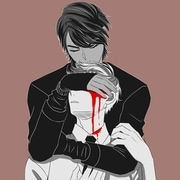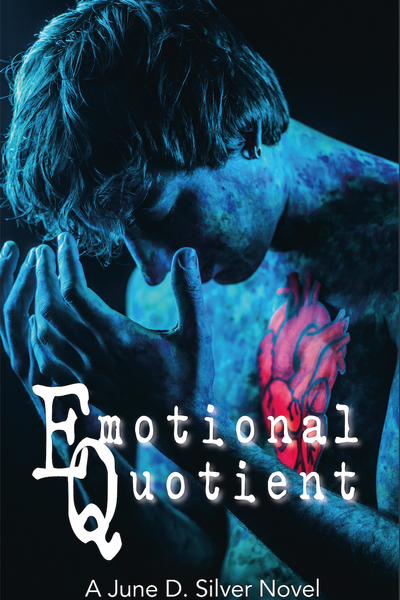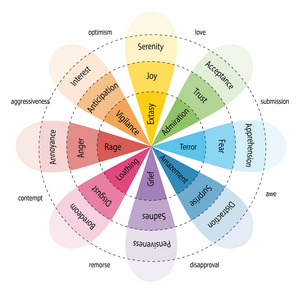Eight dyads of emotion
1. Love 2. Submission 3. Awe 4. Disapproval 5. Remorse 6. Contempt
7. Aggressiveness 8. Optimism
Basic Emotions
1. Joy 2. Trust 3. Fear 4. Surprise 5. Sadness 6. Disgust 7. Anger
8. Anticipation
Mild Emotions
1. Serenity 2. Acceptance 3. Apprehension 4. Distraction 5. Pensiveness
6. Boredom 7. Annoyance 8. Interest
Strong Emotions
1. Ecstasy 2. Admiration 3. Terror 4. Amazement 5. Grief 6. Loathing
7. Rage 8. Vigilance
Educational levels Primary education
Level 1 (one)
Age 2-8 years old
When children reach the age of 2, they are generally well capable of talking to ask for things they need, or tell what they think. They will not be able to feel, but they will be taught what the eight dyads of emotions are, according to their level of perception and their age.
2 to 4 years old: the basic emotions
4 to 6 years old: the mild emotions
6 to 8 years old: the strong emotions
Level 2 (two)
Age 8-12 years old
During the second level, children will start to show/feel emotions, but have no control over these emotions. This so-called ‘early puberty’ can be difficult for caretakers. It requires patience and love to handle children in this age-group. They will be taught to control the basic, mild and strong emotions according to their development, level of perception and age.
8 to 10 years old: control basic emotions
10 to 12 years old: control mild/strong emotions
Level 3 (three)
Age 12-18 years old
When children reach the age of 12, they are required to control all basic, mild and strong emotions. As soon as they have mastered their emotions, they will be taught the combinations of dyads that are one, two or three dyads apart. Lastly, they will be taught ‘conflict’ control.
12 to 14* years old: Primary dyad combinations
14 to 16 years old: Secondary dyad combinations
16 to 18 years old: Tertiary dyad combinations
*When children reach the age of 14, and they have not mastered their emotions, they can be sent to a boarding school to help them catch up with their age-group. This, however, is very expensive and therefor exclusively available for people in the highest part of society.
Level 4 (four)
When reaching the age of 18, people are considered adults. They can head on to secondary education that fits their level of perception and emotional control.
Dyad combinations
Primary Dyad Combinations; Emotions that are one dyad apart
1. Joy + Trust = Love
2. Trust + Fear = Submission
3. Fear + Surprise = Alarm
4. Surprise + Sadness = Disappointment
5. Sadness + Disgust = Remorse
6. Disgust + Anger = Contempt
7. Anger + Anticipation = Aggression
8. Anticipation + Joy = Optimism
Secondary Dyad Combinations; Emotions that are two dyads apart
1. Joy + Fear = Guilt
2. Trust + Surprise = Curiosity
3. Fear + Sadness = Despair
4. Surprise + Disgust = N/A
5. Sadness + Anger = Envy
6. Disgust + Anticipation = Cynism
7. Anger + Joy = Pride
8. Anticipation + Trust = Fetalism
Tertiary Dyad Combinations; Emotions that are three dyads apart
1. Joy + Surprise = Delight
2. Trust + Sadness = Sentimentality
3. Fear + Disgust = Shame
4. Surprise + Anger = Outrage
5. Sadness + Anticipation = Pessimism
6. Disgust + Joy = Morbidness
7. Anger + Trust = Dominance
8. Anticipation + Fear = Anxiety
Opposites; These combinations form a conflict
1. Joy + Sadness = Conflict
2. Trust + Disgust = Conflict
3. Fear + Anger = Conflict
4. Surprise + Anticipation = Conflict












Comments (2)
See all